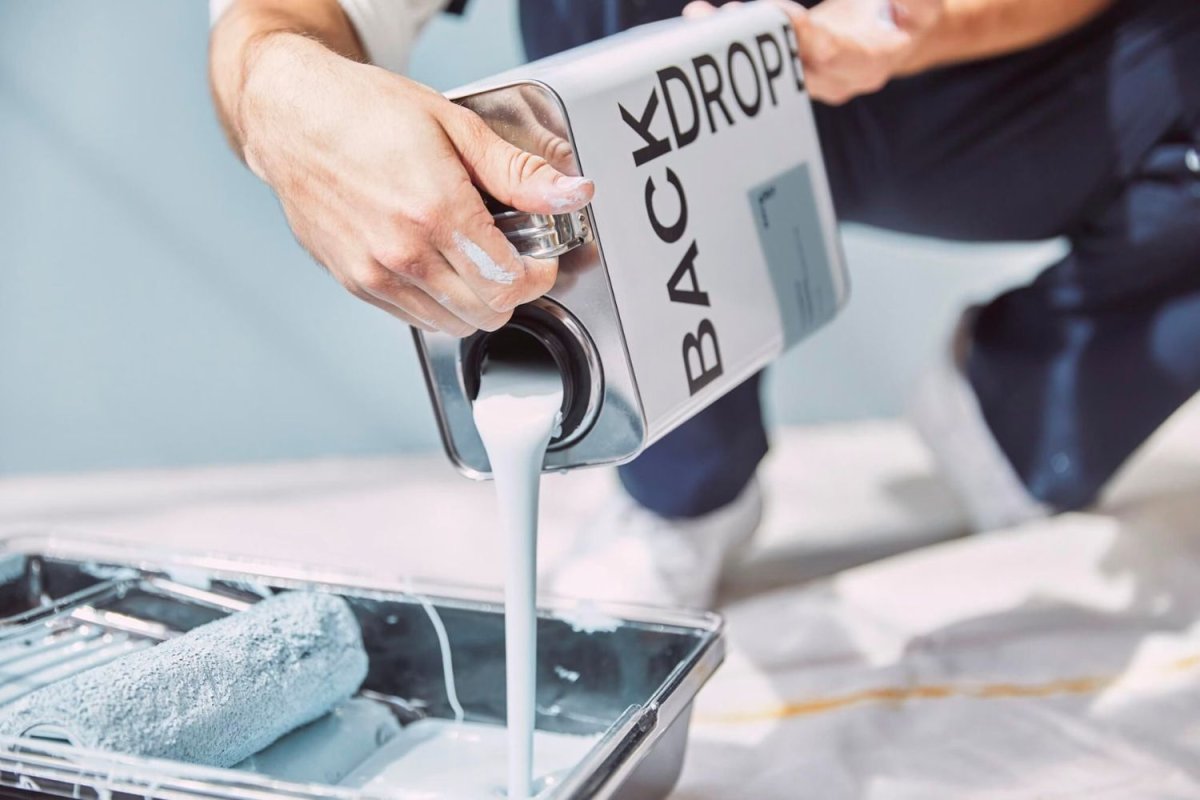

We may earn revenue from the products available on this page and participate in affiliate programs. Learn More ›
Paints come in different colors, finishes, and qualities that can drastically affect the final result. An inexpensive paint for example, could end up costing more in the long run when it takes three or more coats to cover a wall. The best places to buy paint carry high-quality brands, offer a broad range of colors, and have customer-friendly return policies. Some retailers specialize in exterior, interior, or spray paints, while others carry options in several categories and offer all paint supplies from a single location. Our list includes a little of everything, including brick-and-mortar and online stores and some retailers that do both. There’s a paint out there for everyone, and this list can put buyers on the short track to a home color revolution.
1. The Home Depot

Price Range: $-$$$
Return Policy: Home Depot has a 30-day return policy (with receipt), during which it will adjust the color or provide a comparable can of paint in exchange.
Top Products: Behr Marquee Ultra White for $52.98/gallon, Rustoleum Painter’s Touch 2X for $6.48/12 oz.
Since 1978, The Home Depot has been one of the most well-known retailers in the home improvement industry. The retailer scores the top slot in this list for its one-stop shop setup, where buyers can find paint and paint supplies. The Home Depot’s in-store and online inventory has a little of everything, from bulk materials for contractors to basic nuts and bolts for DIYers. It’s also the only place that carries Behr paint, a brand that consistently appears on “best” lists for paint quality and coverage.
Behr produces water- and oil-based paints for both interiors and exteriors, with different tiers of paint quality to fit within a range of budgets. Behr’s products also include wood-floor coatings, cleaners, primers, and specialty finishes for a complete set of options within one brand. Home Depot carries other high-quality brands, like Rustoleum, which primarily makes spray paints that can cover metals and other hard-to-cover materials.
Shop all paint at The Home Depot
2. Lowe’s

Price Range: $-$$
Return Policy: Lowe’s has a 30-day return policy (with receipt) for liquid paint.
Top Products: Valspar Duramax Semi-Gloss for $55.98/gallon, Valspar Signature Matte for $39 per gallon
Lowe’s may not have as many stores as The Home Depot, but its origins reach back to 1921. It caters to everyone from pro contractors and small businesses, to DIYers. While the business model is similar to The Home Depot, Lowe’s carries slightly different products and brands, like Valspar’s Signature paint series. Known for its deep, rich colors, Valspar makes self-priming paint that combines paint and primer into one, cutting the cost and time it takes to paint.
However, Valspar isn’t the only high-quality brand at Lowe’s. This retailer also carries top performers like HGTV Home by Sherwin-Williams, a brand that also has its own stores. This particular line of Sherwin-Williams paint is only carried at Lowe’s and can cover doors and basement walls, which not all self-priming paints can. Like other big box home improvement stores, buyers can find everything they need for paint jobs at a single Lowe’s location.
Shop all paints at Lowes.com
3. Sherwin-Williams

Price Range: $$-$$$
Return Policy: Sherwin-Williams has a 30-day return policy, but returns may be limited on tinted and special orders and may be deemed unreturnable.
Top Products: Emerald Interior Acrylic Latex Paint for $90/gallon, Duration Home Interior Acrylic Latex Paint for $80/gallon
Sherwin-Williams—which is carried by some of the other retailers on our list, specializes in all things paint. This retailer focuses exclusively on paint, which means browsing through all of the options online can become a little overwhelming. However, the brand’s paints are known as some of the best in the business.
Sherwin-Williams paints are rich in color and have quick coverage, saving buyers time and money. The retailer’s brand includes several grades of interior and exterior paints, each falling into different price categories. However, keep in mind even the budget category can be pricey.
This retailer also offers color matching, so if you find a color you love in another brand, they can match the color and sheen in a Sherwin-Williams formula. This store isn’t a home improvement store with everything from plumbing supplies to 2x4s. Instead, it’s a full-service specialty paint retailer with paints for just about every budget and paint job.
Shop all paints at Sherwin-Williams.com
4. Ace Hardware

Price Range: $$-$$$
Return Policy: Ace has a limited 30-day return policy for in-store paint purchases and does not do returns on tinted paints ordered online.
Top Products: Benjamin Moore Aura Interior Paint for $98/gallon, Benjamin Moore Ben Semi-Gloss Base 1 Paint and Primer Interior for $53/gallon
Ace Hardware is better known for its hammers and nails than its paint, but it carries three paint brands, two of which we’re highlighting—Benjamin Moore and Magnolia Home. Ace stores vary in size, so a local store may not have everything that one of the larger stores does. However, Ace also sells everything online, maintaining a hometown hardware feel, while competing with big box retailers.
Ace is the place to get Benjamin Moore paint, which are thick with high-pigment paints that cover in fewer coats. While thicker paint can make it difficult to clean brushes, Benjamin Moore paints leave behind beautiful colors, and this brand includes low and no-VOC options. Additionally, there are 4,000+ colors to choose from, although this brand is on the expensive side.
Fans of Joanna and Chip Gaines can also get Magnolia Home paint at Ace Hardware. While the brand isn’t the same quality as Benjamin Moore, it’s more affordable and features the modern farmhouse look made popular on the television show Fixer Upper.
Shop all paints at Ace Hardware
5. Backdrop

Price Range: $$-$$$
Return Policy: Backdrop accepts unopened or unused single-gallon paint for a $10 restocking fee.
Top Products: Acrylic Exterior Paint for $49/gallon, Acrylic Interior Paint for $49/gallon
Backdrop is new to the paint industry, and it’s the first paint brand that’s Climate Neutral Certified. This brand takes an eco-friendly approach to home design, with all of its paint being low odor, low VOC, and green-certified.
Backdrop doesn’t carry as many color options as some of the other places on our list. But it is quickly making a name for itself in both the quality of the paint and its commitment to eco-friendly practices. Plus, we love that buyers have the option to order removable adhesive squares in sample colors. The squares can be removed and reapplied over and over again so buyers can find the right colors for the right room. At this time, Backdrop is an online-only retailer.
Shop all paints at Backdrophome.com
How We Chose the Best Places to Buy Paint
Paint makes a big difference in the feel and functionality of any space, but the quality can vary from brand to brand. Consequently, when considering which places offered the best paint, we started with paint quality. Quality paints offer both light and airy colors alongside deep, rich colors. The sheen and finish selection also factored into the final decision.
We also considered color and paint type selection. A wide range of colors and paint types gives buyers options that fit the needs of different rooms and climates. For example, interior and exterior paints typically have different formulas and some brands make paint likes with stain, mildew, and weather protection. Some retailers also offer specialty paints for trims, basements, and bathrooms.
Next, we considered return policies. Getting the wrong color of paint can turn an exciting update into a glaring pink nightmare. Customer-friendly return policies boosted retailers’ place on the list and kept customers coming back knowing they won’t be stuck with 10 gallons of paint they can’t use.
